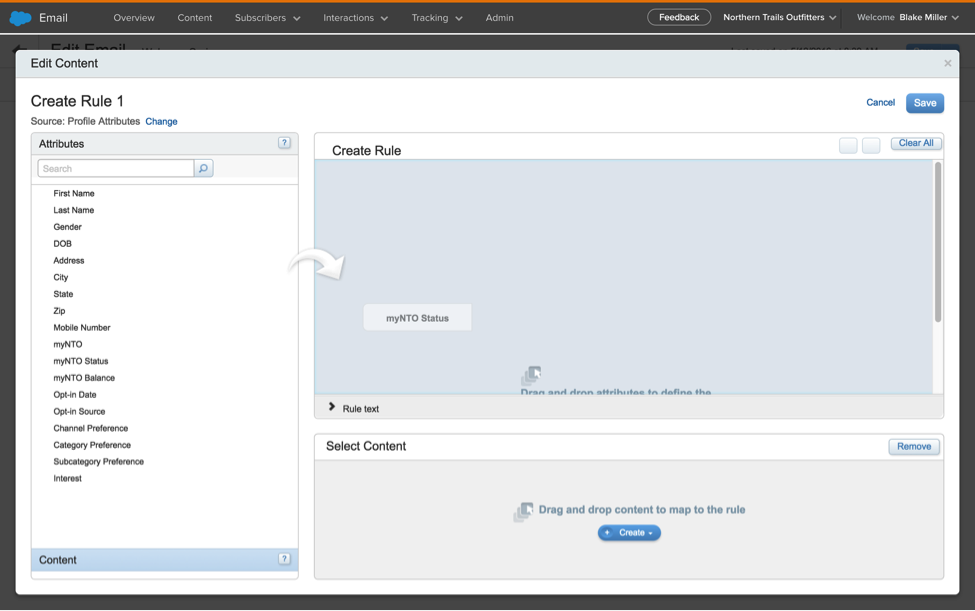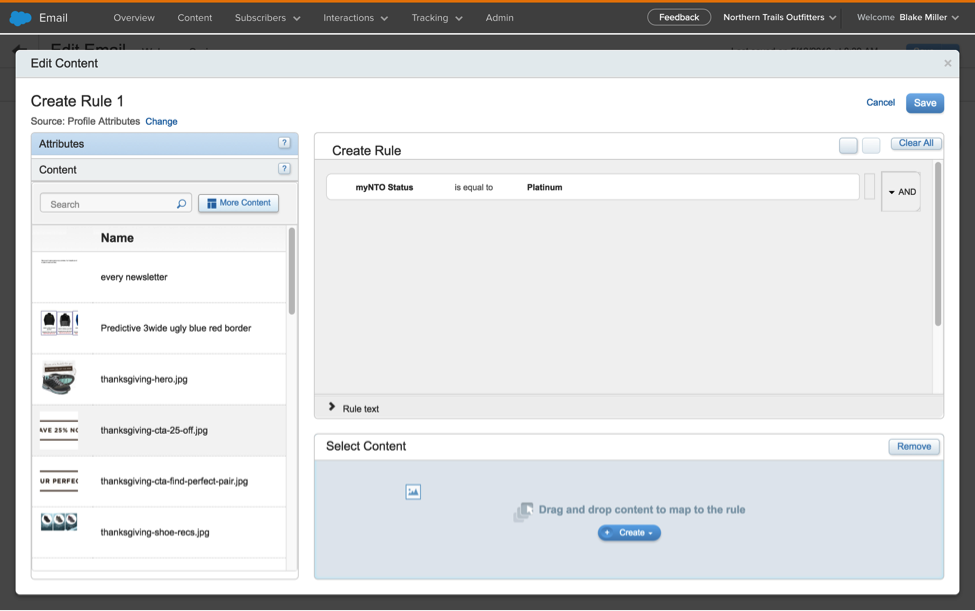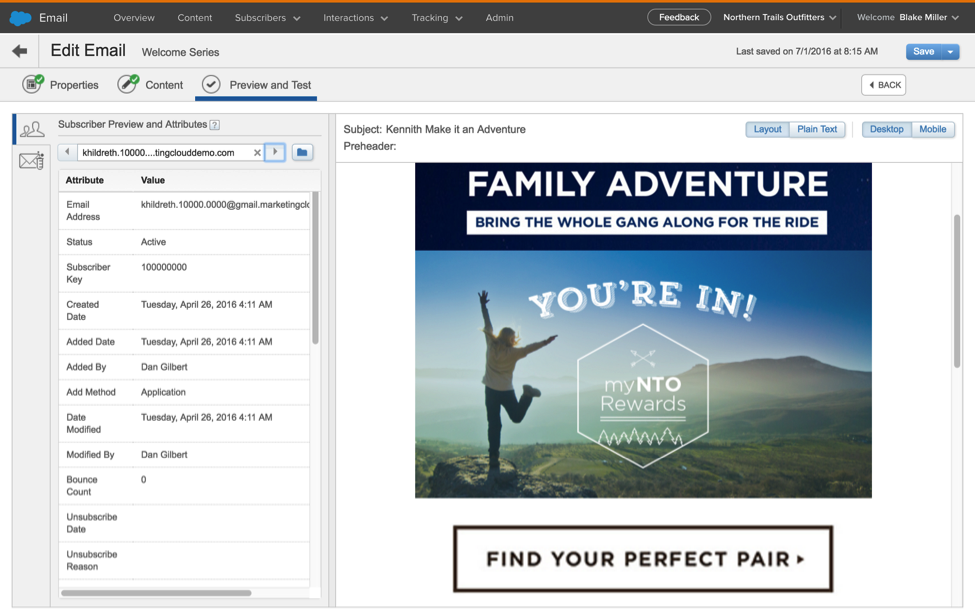
Get your FREE 30-day trial.
Please complete all fields.
It's a fact: Personalization drives better email results. According to the Aberdeen Group, personalized emails create a 14% increase in click-through rates and a 10% increase in conversions. So why isn't every marketer personalizing every email before sending? Perhaps it's because some are stuck in the era when turning data into 1-to-1 email experiences was cumbersome and time consuming. If that situation sounds familiar, it's time get acquainted with dynamic content. I promise-you'll never look back.
Dynamic email content allows marketers to leverage all of their audience data and create personalized messages for each subscriber segment. It makes it possible to deliver content with pinpoint precision-and best of all, it scales.
Here are three simple steps to how dynamic email content works.
Salesforce Marketing Cloud makes leveraging dynamic content incredibly simple.
To start, within the Content Builder Editor, drag the dynamic content block into the template. Next, open the Content Block to start matching your audience and content. âÂÂ
Then, select your default content. This is the content any subscriber that doesn't match your rules will receive. Now select your business rule and content. In the example below, we've selected rules based on loyalty status. âÂÂ
Now drag over our corresponding content. âÂÂ
In this case we are using an image, but this could be text, image, code, or any type cont content block. Repeat this process for each of your different content and audience pairings.
Congratulations! You have just created a targeted email leveraging dynamic content in one email. Now you can test all of your business rules and logic against your subscribers so you can ensure that everything is setup correctly. âÂÂ

How to Get Started with Personalized Emails
The benefits of dynamic content are clear. You can target specific audience segments with precision, without the hassle of manipulating data. Not only does dynamic email content provide scale, it delivers the personalized customer experience your customers want and expect.
Interested in learning more email marketing tips and tactics? Download 4 Email Practices of Marketing Masters for valuable email marketing statistics-and how to apply them to your marketing strategies.